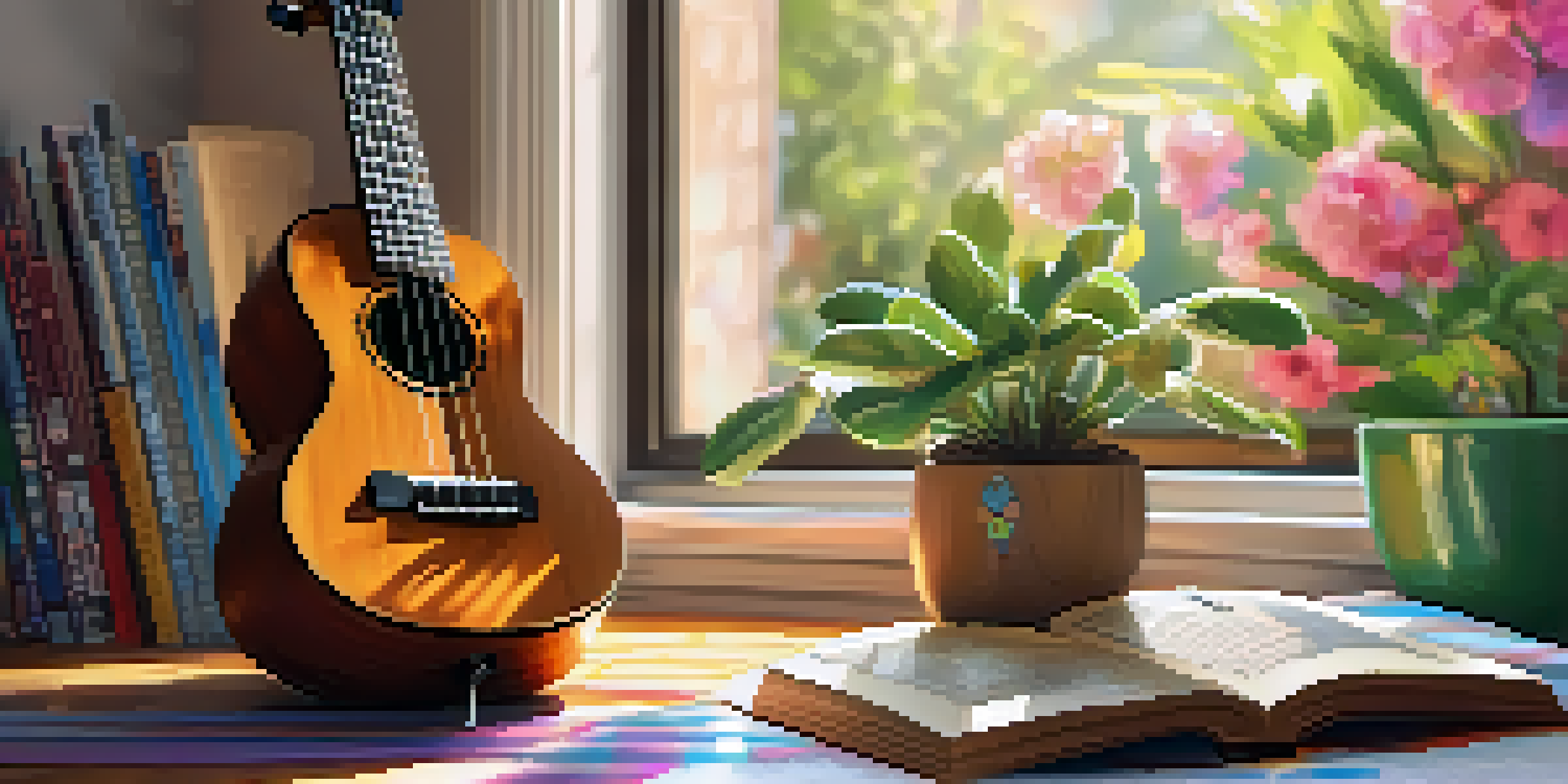Tips for Recognizing Chords When Learning Ukulele by Ear

Understanding the Basics of Chord Recognition
Before diving into recognizing chords by ear, it's crucial to understand what chords are. In music, a chord is a combination of notes played together, forming a harmonious sound. On the ukulele, common chords include C, G, and F, and each has its unique sound and character.
Music is the shorthand of emotion.
To recognize chords, start by familiarizing yourself with these basic sounds. Play them repeatedly while listening closely. The goal is to distinguish how each chord feels and resonates, paving the way for better recognition in songs.
Think of chord recognition like identifying different flavors in a dish. Just as you would taste and analyze each ingredient, doing the same with chords will help you become more attuned to their distinct qualities.
Listening Actively: The Key to Ear Training
Active listening is an essential skill when it comes to recognizing chords. This means focusing entirely on the music rather than multitasking. By dedicating your attention, you can pick up on subtle differences in chord changes as they occur.

Try listening to songs you love and identify the chords being played. You can even use an app or a recording to isolate the chord changes. As you practice, your ability to recognize chords will improve, creating a more enjoyable playing experience.
Master Chords with Active Listening
Focusing on music without distractions enhances your ability to recognize chord changes.
Imagine you’re a detective, piecing together clues from a mystery. Each chord is a clue that helps you solve the musical puzzle, leading to a greater understanding and appreciation of the song.
Using a Piano or Keyboard for Reference
If you're struggling to identify chords on the ukulele, using a piano or keyboard can be incredibly helpful. Each chord played on the piano can provide a clear, resonant sound that’s easier to distinguish. This auditory clarity can make it simpler to associate the same chords on the ukulele.
The beautiful thing about learning is that no one can take it away from you.
Start by playing a chord on the piano and then find the same chord on your ukulele. This process reinforces your memory and helps develop a stronger connection between the two instruments.
Think of this technique as having a guidebook while exploring a new city. The piano acts as your map, helping you navigate through the musical landscape and discover exciting new paths.
Practice with Simple Songs You Love
One of the best ways to enhance your chord recognition skills is to practice with simple songs you enjoy. Start with songs that use only a few chords, such as 'You Are My Sunshine' or 'Twinkle, Twinkle, Little Star.' Their simplicity allows you to focus on recognizing the chords without feeling overwhelmed.
As you play, try to listen for changes in the chords while singing along. This will not only improve your ear but also help you link the sound of the chords with their visual shapes on the ukulele.
Utilize Digital Tools for Learning
Apps and online resources provide interactive methods to improve your ear training and chord recognition skills.
Consider this practice like learning to ride a bike. At first, it may feel challenging, but with each song, you gain confidence, balance, and ultimately, the freedom to explore even more complex musical terrains.
Utilizing Apps and Online Resources
In today's digital age, there are countless apps and online resources designed to help with ear training. Apps like 'Yousician' or 'EarMaster' provide interactive exercises that can significantly improve your chord recognition skills. These tools often include games and challenges that make learning fun and engaging.
In addition to apps, websites like YouTube offer tutorials and chord breakdowns for popular songs. Watching and listening to others can provide valuable insights and further reinforce your learning.
Think of these resources as your personal trainers in the gym of music. Just as a trainer guides you through workouts, these tools help you build your skills, one chord at a time.
Engaging with Other Musicians
Connecting with fellow musicians can be an excellent way to enhance your chord recognition abilities. Joining a ukulele group or participating in jam sessions allows you to learn from others and share your experiences. Listening to different playing styles can also expose you to new chords and techniques.
When playing with others, challenge yourself to identify the chords they are using. If you’re unsure, don’t hesitate to ask! This open exchange of knowledge fosters a supportive learning environment.
Practice with Songs You Love
Playing simple, enjoyable songs helps solidify your understanding of chords and boosts confidence.
Imagine a potluck dinner where everyone brings a unique dish. Just as you’d sample and savor each offering, engaging with other musicians allows you to experience a variety of musical flavors that can enrich your own playing.
Be Patient and Celebrate Progress
Learning to recognize chords by ear is a journey that requires time and patience. It’s essential to be kind to yourself and acknowledge that progress may be gradual. Celebrate small victories, whether it's identifying a new chord or playing through a complete song.
As you continue to practice, you'll notice that your ear becomes more tuned to the sounds around you. Trust the process, and remember that every musician has faced challenges along the way.

Consider your musical journey like planting a garden. With consistent care and attention, you'll see growth over time, eventually blossoming into a rich tapestry of musical skills and knowledge.